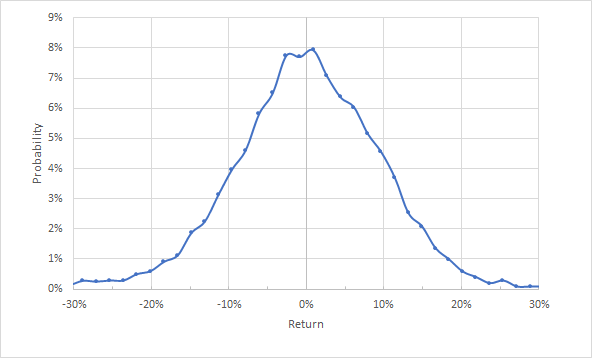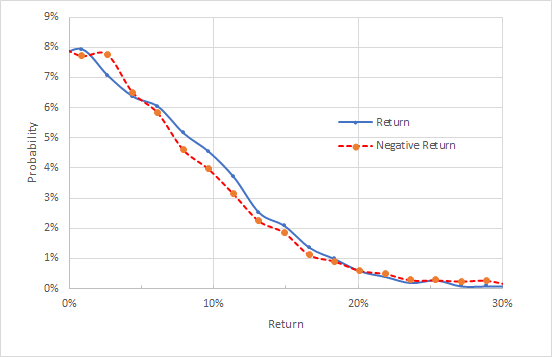Bank of Montreal (NYSE:BMO) reports Q3 2021 earnings on Monday, Aug. 23, before the open. BMO has beaten the consensus on EPS for the last four quarters and has beaten on revenue for the past three.
The market has responded favorably to the company’s performance as well as the improving outlook for banks. BMO has total YTD return of 38.6%, as compared to 27.7% YTD for the iShares U.S. Financials ETF (NYSE:IYF) and 24.2% for the iShares Global Financials ETF (NYSE:IXG).

Source: Investing.com
Even with the substantial price appreciation this year, BMO looks cheaper than JPMorgan Chase (NYSE:JPM), Bank of America (NYSE:BAC), and Wells Fargo (NYSE:WFC) on the basis of forward P/E.
Citigroup (NYSE:C) has lower P/E than BMO but also lower yield.
Stock | ||
Bank of Montreal (BMO) | 10.8 | 3.3% |
Citigroup (C) | 9.2 | 2.8% |
JPMorgan Chase (JPM) | 12.5 | 2.3% |
Bank of America (BAC) | 13.9 | 2.0% |
Wells Fargo (WFC) | 14.2 | 1.6% |
Forward P/E and forward dividend yield for BMO vs. major U.S. banks (Morningstar.com)
The 5-year dividend growth rate for BMO is 5.6%. A simple Gordon Growth Model view suggests that the expected return for BMO is 8.9% (5.6% dividend growth rate plus dividend yield).
Over the 3- and 5-year periods, BMO’s total returns are generally in line with the iShares U.S. Financials ETF, but BMO lags substantially for the 10-year period.
1-Day | 1-Week | 1-Month | 3-Month | YTD | 1-Year | 3-Year | 5-Year | 10-Year | 15-Year | |
BMO | -0.28 | 2.20 | 2.46 | 5.62 | 38.64 | 80.59 | 12.46 | 12.79 | 8.30 | 6.46 |
IYF | 0.27 | 0.83 | 3.61 | 5.24 | 27.73 | 46.48 | 13.87 | 15.55 | 15.49 | 5.19 |
IXG | 0.35 | 1.74 | 4.32 | 2.63 | 24.20 | 46.00 | 9.74 | 12.29 | 10.42 | 2.77 |
Trailing total returns (%) for BMO vs. IYF and IXG. Periods longer than 1 year are annualized (Source: Morningstar)
To formulate a view on BMO, I rely on two forms of consensus outlooks. The first is the well-known Wall Street analyst consensus. This provides a 12-month price target based on earnings expectations.
The second type of consensus that I consider is the market-implied outlook, which is derived from the prices of options on BMO. The market price of an option represents the market’s consensus estimate of the probability that the price of a stock will rise above (call option) or fall below (put option) a specific level (the strike price) between now and the expiration of the option.
By analysing call and put options at a range of strike prices and the same expiration date, it is possible to calculate the probabilities of all possible future returns for this period that will reconcile the options prices. For those who are not familiar with market-implied outlooks, I have written an overview post with examples and links to the relevant financial literature.
The Wall Street consensus represents the aggregate view from analyzing fundamentals, while the market-implied outlook captures traders’ beliefs about the odds of gain and loss reflected in options prices.
Wall Street Consensus on BMO
eTrade compiles a Wall Street consensus outlook for BMO from 10 ranked analysts who have issued ratings and price targets within the past 90 days. The consensus rating is bullish and the consensus 12-month price target is $108.94, 6.7% above the current price.
There is a high level of consistency between the analysts, which tends to increase confidence in the predictive value of the consensus. The lowest 12-month price target is only 1.49% below the current price.

Source: eTrade
By comparison, Seeking Alpha’s Wall Street consensus outlook combines 14 analysts, the consensus rating is bullish, and the consensus 12-month price target is 7.5% above the current price.
Combined with the 3.3% dividend yield, the expected 12-month total return from the consensus outlook is around 10%. This is generally in line with the Gordon Growth Model estimate using the 5-year dividend growth rate.
Market-Implied Outlook for BMO
I have analyzed put and call options on BMO at a range of strike prices, all expiring on Dec. 17, 2021, to calculate the market-implied outlook for BMO for next 4 months (between today and the expiration date). I selected the December 2021 options to provide an outlook to the end of the year.
The market-implied outlook is expressed as a probability distribution of price return, with probability on the vertical axis and return on the horizontal.

Source: author’s calculations using options quotes from eTrade
The outlook for the next 4 months is highly symmetric, with very similar probabilities for positive and negative returns of the same magnitude. The 90th percentile for price return over the next 4 months is +11.8% and the 10th percentile is -12.6%, for example.
The peak probability corresponds to a price return of 0.88% and the median is 0.0%. The annualized volatility derived from this distribution is 21%, which is on the very low end for individual stocks. For comparison, I calculated 30% annualized volatility for Citigroup in a just-published post.
To make it easier to directly compare the positive and negative return probabilities, I look at a version of the market-implied outlook with the negative return side of the distribution rotated about the vertical axis (see below).
Market-implied price return probabilities for BMO for the 4-month period from today until December 17, 2021. The negative return side of the distribution has been rotated about the vertical axis

Source: author’s calculations using options quotes from eTrade
The probabilities of positive and negative returns of the same magnitude are almost identical (the solid blue line is very close to the dashed red line). This market-implied outlook is somewhat bullish.
The market-implied outlooks for dividend-paying stocks tend to have higher probabilities of negative returns relative to positive returns because the dividend payments reduce the potential upside on a stock. For dividend-payers, a symmetric market-implied outlook is bullish.
In addition, investors tend to be somewhat risk averse, paying more than fair value for put options that protect their downside. A neutral market-implied outlook is expected to have slightly elevated probabilities of negative returns to reflect this. Considering these two factors, having such a symmetric market-implied outlook (blue line almost on top of the dashed red line) is moderately bullish.
Summary
BMO shares have gained almost 40% for the YTD as a result of strong earnings and the improving outlook for banks. At the current price, the shares still look fairly cheap and the 3.3% dividend yield is high relative to major U.S. banks.
The Wall Street consensus is bullish, with expected 12-month price appreciation of about 7%, for a total expected return of about 10%. It is worth remembering that BMO has been out-performing expectations in recent quarters, too.
With expected (annualized) volatility of 20% (from the market-implied outlook), a 10% total return represents a reasonable bet. The market-implied outlook for BMO is also moderately bullish. BMO has low expected volatility and fairly low upside potential.
For investors seeking exposure to lower-volatility financials, while still generating income, BMO is worth considering.
